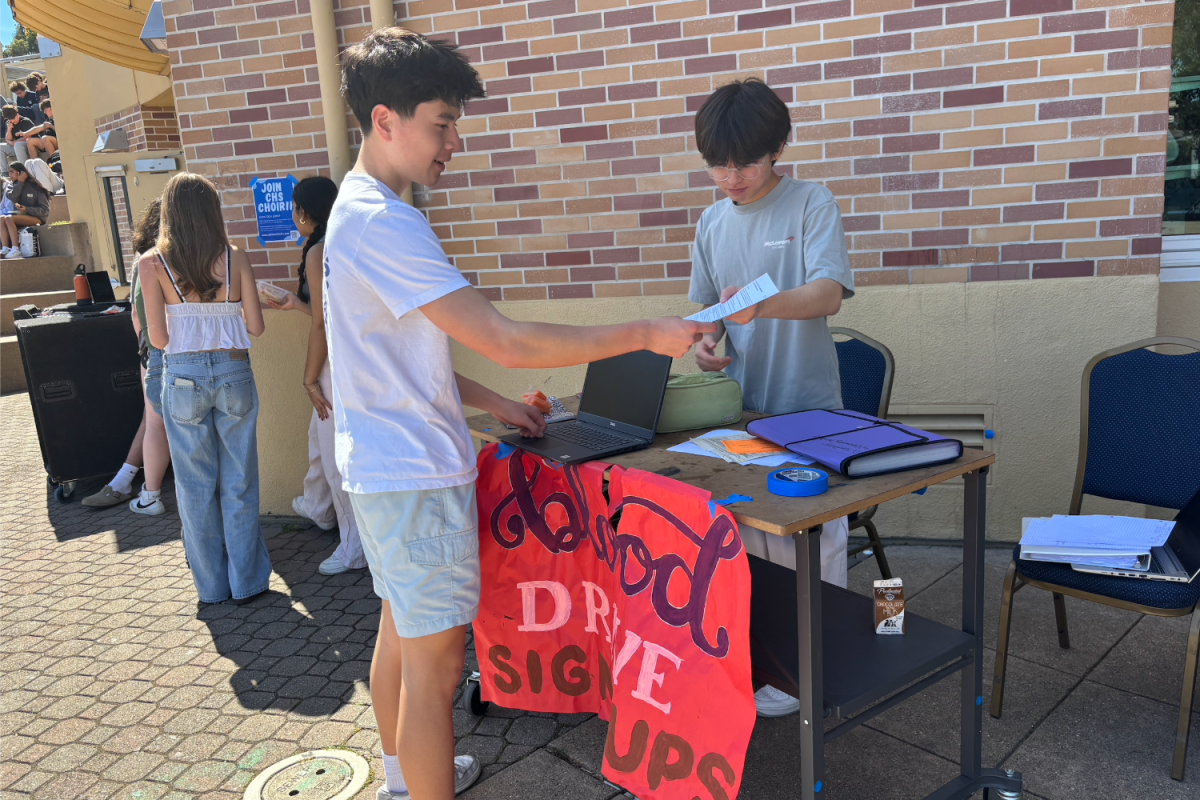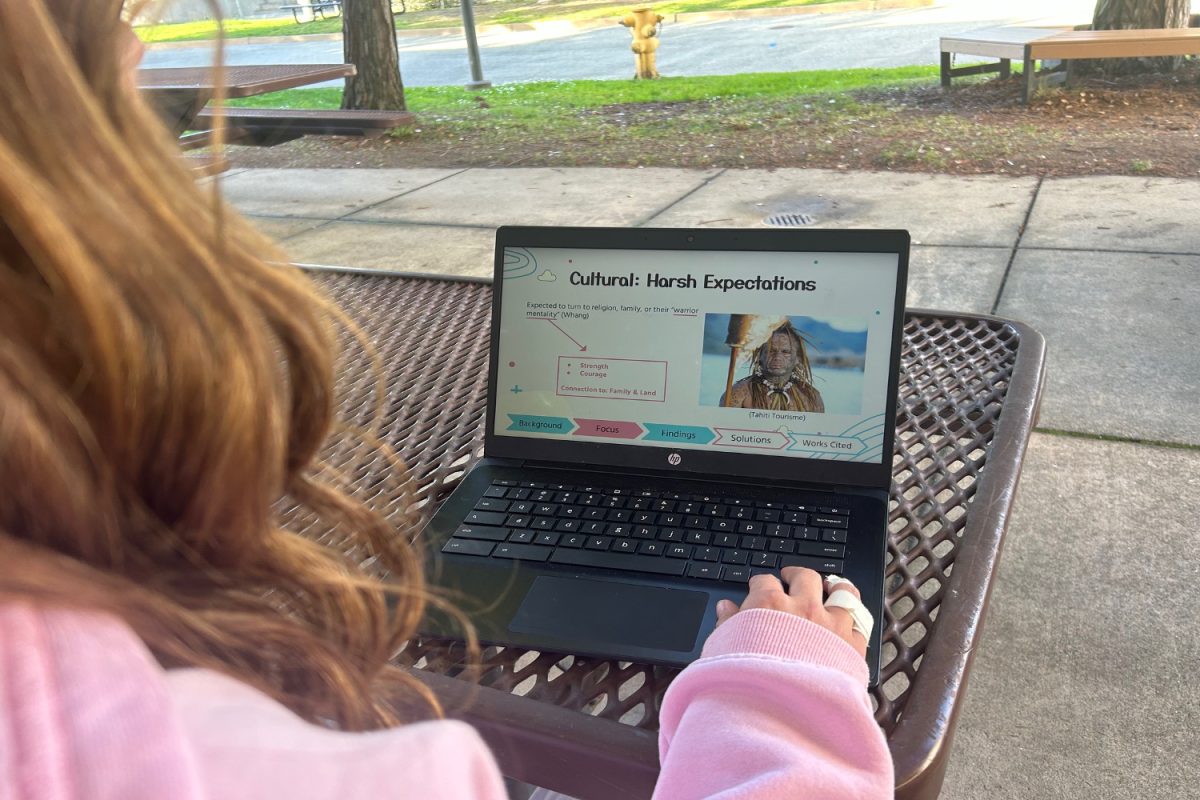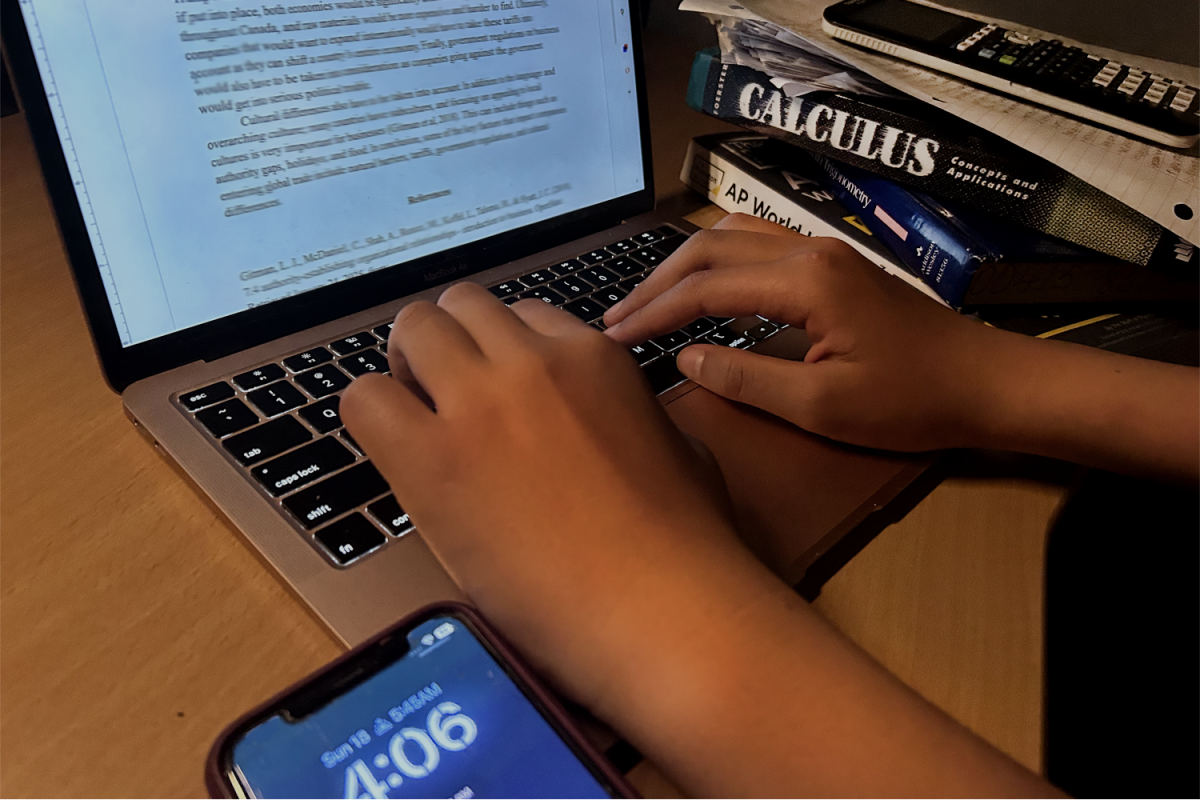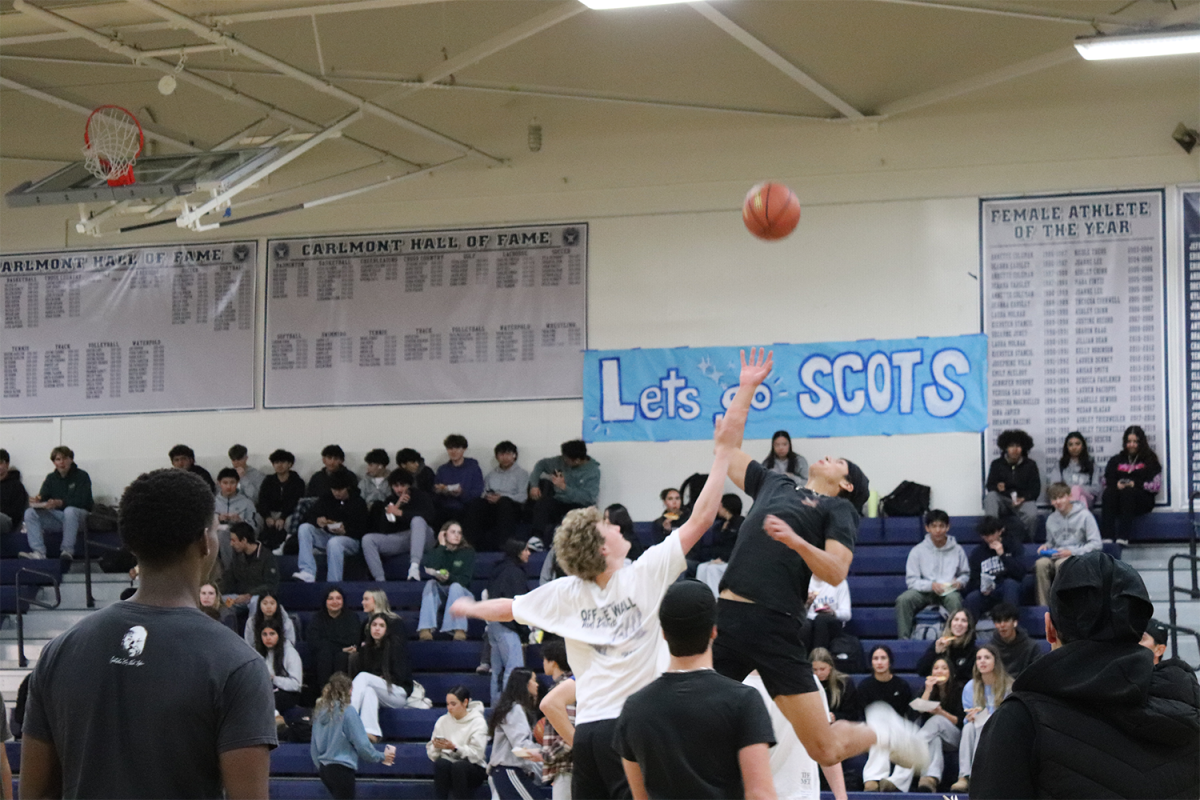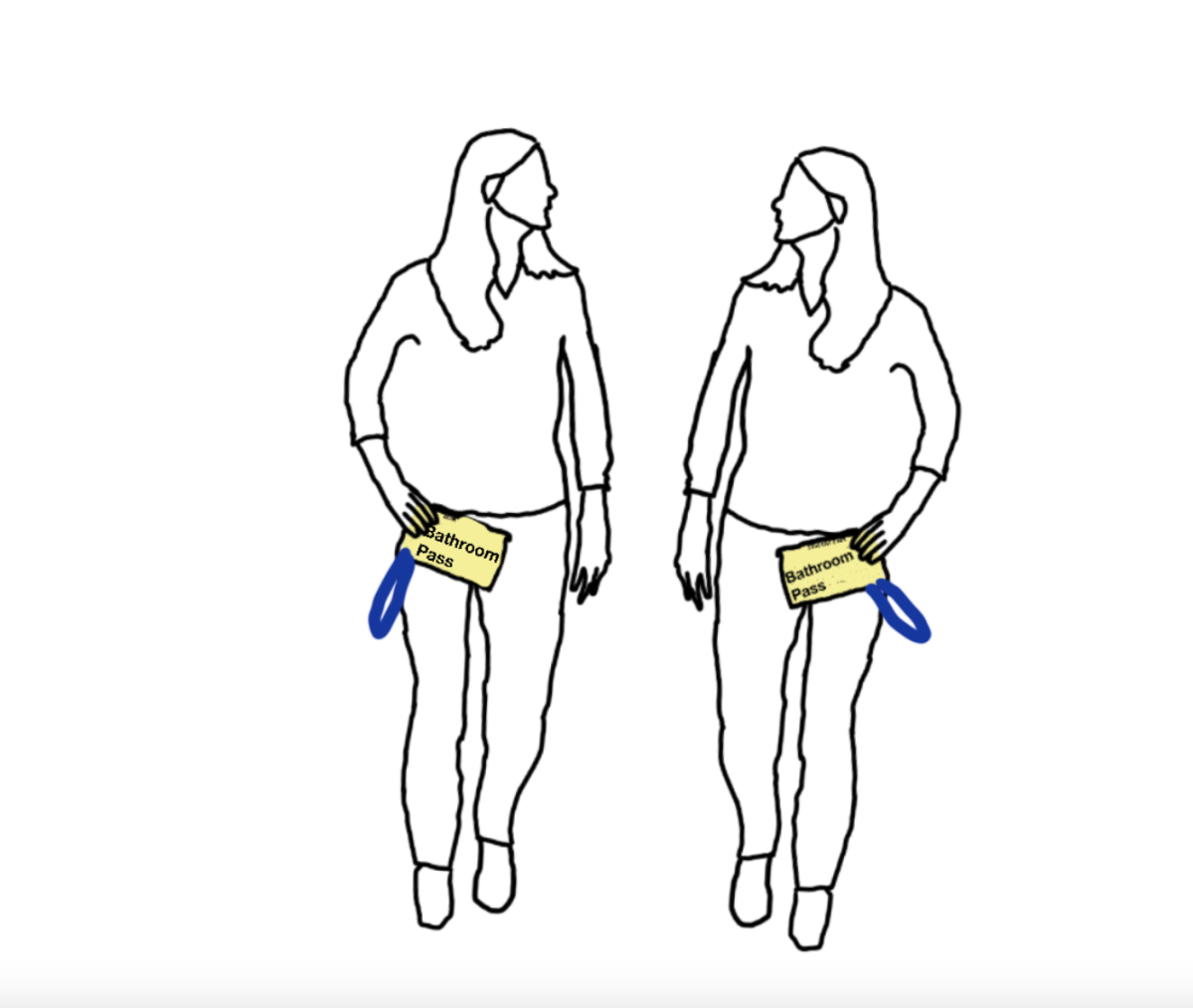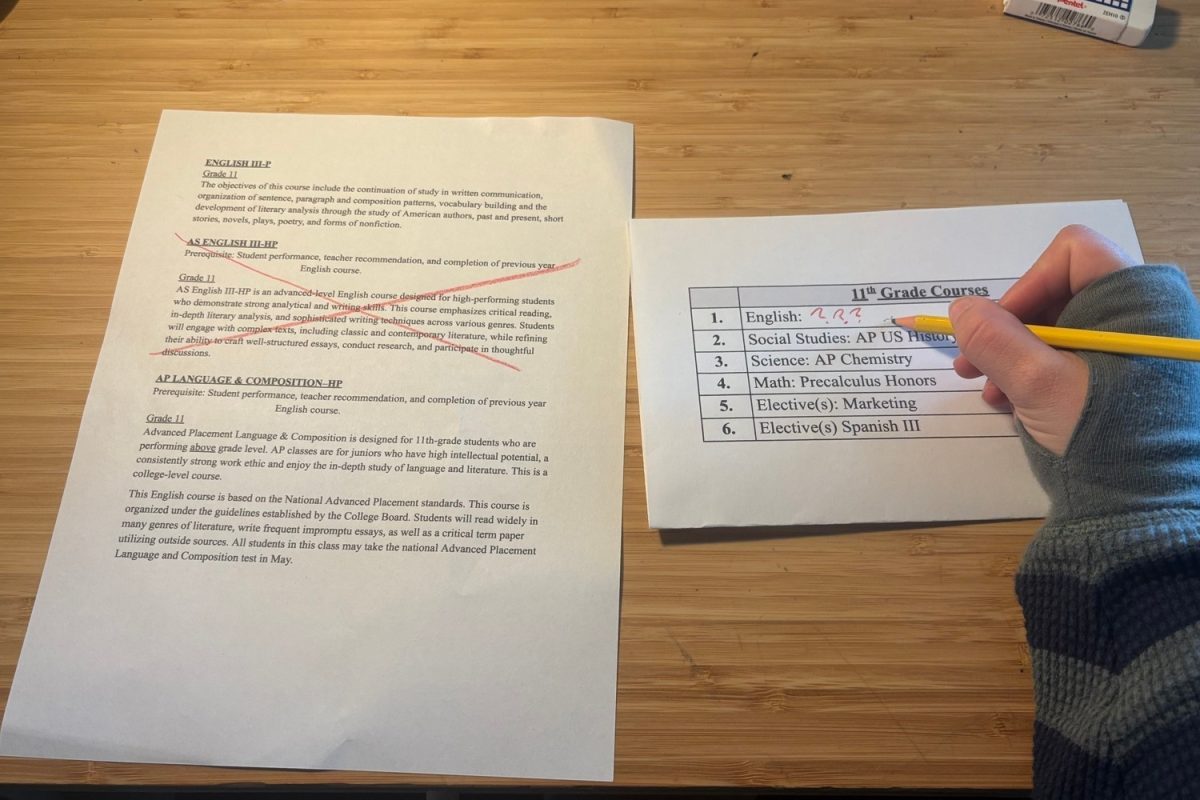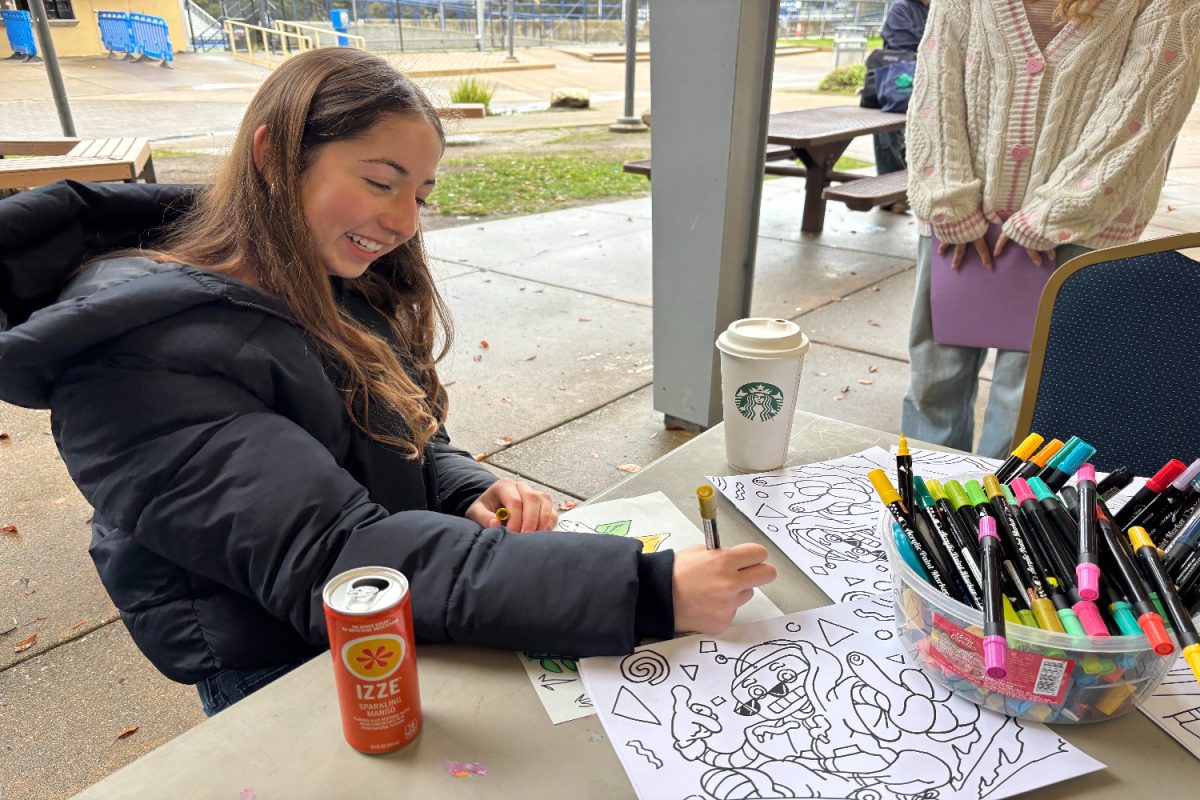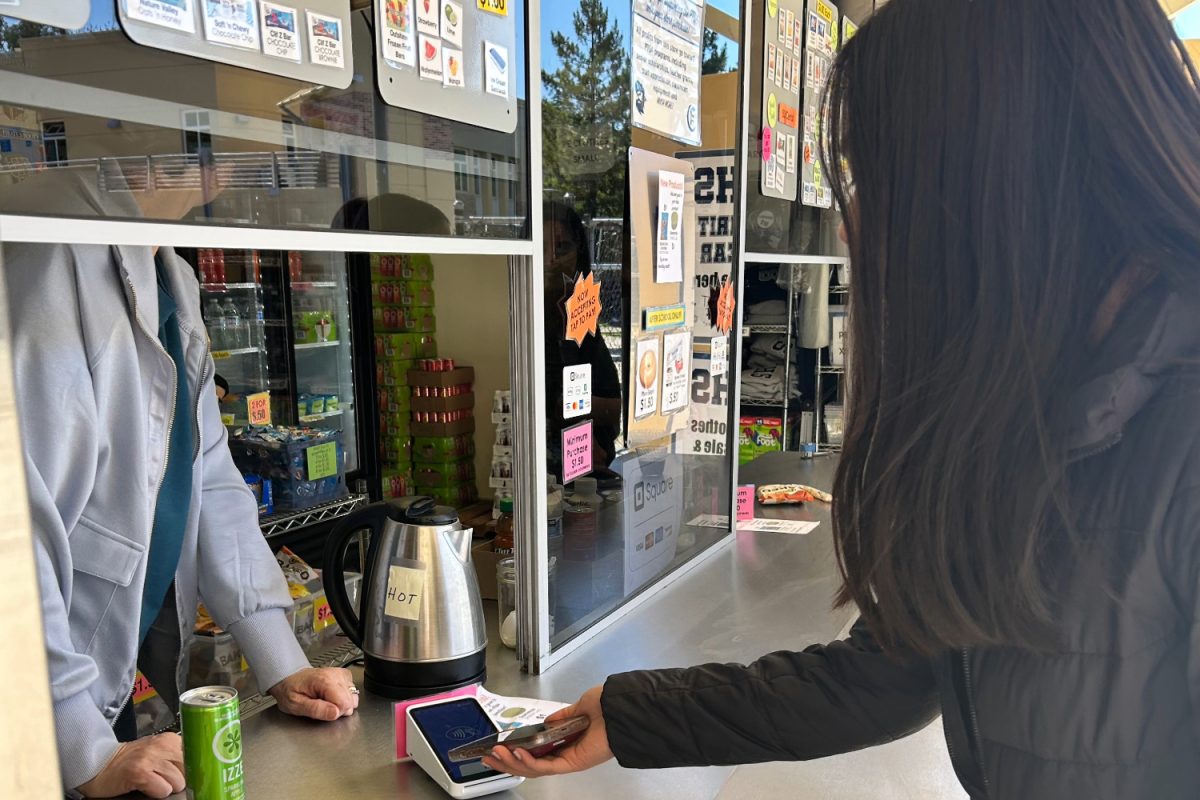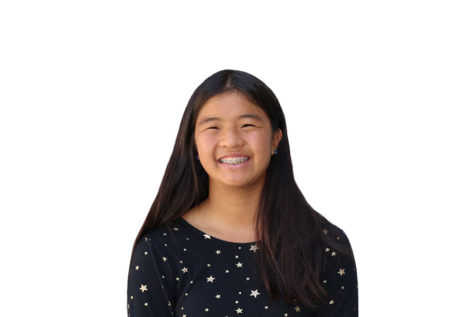Bystanders watch eagerly as the two characters onscreen exchange blows back and forth. The players sit hunched, eyes alert, entirely focused on the battle. Their fingers fly across their controllers with practiced ease. Murmurs fill the air as one character takes a direct hit and is launched off the stage, but is able to recover. The battle continues, anticipation heavy in the air as all eyes are on the same screen.
This is no friendly challenge.
This is the Carlmont Super Smash Bros. tournament.
The game
Super Smash Bros., also known as Smash Bros. or Smash, is a fighting video game featuring characters from various franchises.
The first Smash Bros. game was created in 1999 by Masahiro Sakurai for the Nintendo 64. Since then, he has continued to create other installments for other platforms, including the Gamecube, Wii, Nintendo 3DS, Wii U, and the Nintendo Switch.
Smash Bros. distinguishes itself from other fighting games through its gameplay, which is based around knocking other fighters off the stage rather than depleting health bars.
Each character has individual moves and attributes, leaving room for players to be creative when choosing who to play. While the controls are more basic than other fighting games, players can use combos to rack up damage and ultimately launch their opponents out of bounds.
“If tournament popularity was the most important consideration, then I think we would create a Smash Bros game that included a multitude of fast moves with complicated controls,” Sakurai said in an interview with EDGE. “However, I believe this is actually the greatest shortcoming of fighting games at present, and that is the reason why I don’t do it.”
Recently, Smash Ultimate won Best Fighting Game at the 2019 Game Awards, recognizing Nintendo’s efforts to create an enjoyable fighting game for all.
The series itself is marketed towards people of all ages, casual and competitive.
“This whole competitive play space is something that we are looking at and continue to participate in,” said Reggie Fils-Aime, retired president of Nintendo of America, in an interview with The Hollywood Reporter. “There’s a well-developed competitive circuit, there’s a number of key competitive players, and the community is robust. Our approach has been to encourage and enable the community, but beyond that, to be fairly hands-off.”
The competitive Smash scene has attracted a large fanbase and includes both local, regional, and national tournaments. It’s also been embraced by many large-scale fighting tournaments, including EVO and Genesis.
The most recent installment in the line of Smash games is Smash Ultimate, which has all of the characters from the previous Smash titles in addition to several newcomers and Downloadable Content (DLC) characters. With over 74 fighters, it has the most extensive roster out of all the Smash games, making it the most popular installment to date.
In Dec. 2018, when Smash Ultimate first came out, the physical copy of the game was Amazon’s number one best-selling video game, while the digital copy was Amazon’s number three.
But Nintendo’s focus isn’t on sales; instead, it hopes to bring together a community of players.
“As Super Smash Bros. Ultimate continues to grow its roster of fighters, stages, and music through downloadable content, we hope players will enjoy meeting both new friends and familiar faces that bring the game to life in unexpected ways,” said Nick Chavez, the Senior Vice President of Sales and Marketing for Nintendo of America.
The club
The Carlmont Super Smash Bros. Club, true to its name, creates a welcoming community where fans of Smash can meet others who like the Smash games just as much as they do.
Gregory Fung, a physics teacher, has been advising the club in recent years. The club meets every Monday at lunch in his room, A10, where members can play Smash or hang out with friends.
“Years ago, Brian Shao asked me to advise Smash Club. I like video games, so I thought it’d be fun. Smash Club is a great club, and it’s nice to see the students play the game,” Fung said.
This year, the club saw an influx of new members, growing to about 50 members total. One such new member was Emma Evans, a junior.
“I joined Smash Club because a lot of my friends were in it; even though I didn’t have Smash at home, I liked the game, so joining the club gave me a chance to play it and get better at it,” Evans said.
While some joined to find people with similar interest in Smash, other members such as Anthony Yip, a sophomore, joined the club to engage in the Carlmont community.
“Before school, my brother told me that since I liked playing smash and he happened to run the club at the time, I should join for the coming year,” Yip said. “I decided that this was a great opportunity to get more acquainted with my school community as a freshman.”
Smash Club allows all students to join, whether they play casual, competitive, or are simply a fan of Smash. Some, such as Yip and Evans, play Smash just for fun.
“Smash serves as a great de-stress tool from school, and it helps me to become closer with my peers. It serves as the bond that can turn two random people into instant friends, and I like the great potentials that come from this game. It’s affected my life in a positive way,” Yip said.
Others, such as vice presidents and sophomores Pavlik Gribanovsky and Dylan Murphy, have dedicated their time to the competitive scene.
“I’ve been playing Smash since I was about seven or eight. Back then, it was usually a couple of my friends playing Brawl casually with items on and random stages. At the end of Smash 4, my friend Patrick, who goes by the tag ‘Turple,’ was improving rapidly, as he had started doing online tournaments. I wanted to beat him, as friends do, so I became more invested in the competitive scene,” Gribanovsky said. “I didn’t go to my first tournament until February of this year, but that sparked my love for competing and wanting to get better.”
Like Gribanovsky, Murphy also first started playing Smash around the time when Super Smash Bros. Brawl was released, leading to his passion for competitive play.
“Smash was mainly just one of my favorite video games growing up when Brawl was out on the Wii. Once I got a DS, my parents bought Smash with it. I was first introduced to the competitive scene at a convention tournament, which sparked my interest in playing competitively. I got back and went to the Smash Bros Club; that’s when I started diving fully into competitive Smash Bros,” Murphy said.
Despite the differences in casual and competitive play, students are drawn to the club by a united love of Smash.
“Nowadays, Smash is the main thing I spend my free time doing. I love playing the game and learning new things about it, so you could say Smash is a very strong passion of mine,” Gribanovsky said.
As one of the vice presidents, Gribanovsky hopes to uplift the club through his goal to provide a positive community and space for members to play Smash and get to know each other better.
“I became vice president because I felt Dylan and I could improve the club beyond what Broon and Fernando already did. The club has had its ups and downs, but it’s been a great place overall for people to make friends, have fun, and play Smash,” Gribanovsky said.
Murphy shares a similar sentiment, noting that Smash Club has the potential to grow and develop, even more than it already has.
“Being in the club has been really fun. I wish we could get more popular and be the big club of Carlmont because we have the number of members to do so. This experience was good practice for my management skills, and I hope I can teach it to people who will be vice presidents in later years,” Murphy said.
On their journey to engage both members and the overall Carlmont community, Murphy and Gribanovsky decided on changing up the agenda.
This fall, the club embarked on its most ambitious dream yet: making a Carlmont Smash Bros. tournament a reality.
The tournament
The tournament ran from Oct. 19 to Dec. 12, with members coming in at lunch to play their matches. Tournament matches were also displayed on the main projector in A10 during club meetings, allowing members to watch.
Murphy was the main organizer behind the tournament, taking responsibility for making announcements in the Smash Club Discord server and creating the schedules and brackets for the competition.
“The tournament was pretty easy to organize, but it was way easier on paper,” Murphy said. “I also wanted a more ‘grand’ space for our Top 8, so it could feel like a real tournament with an audience. Unfortunately, time crept up on me, and I couldn’t get anything established.”
The tournament was advertised to all Carlmont students through school-wide announcements. Potential participants were required to attend a meeting to get the dates of their matches and confirm their participation.
Both non-club and club members signed up, resulting in a total of 45 participants. But, despite the open sign ups, some club members decided not to participate.
“I haven’t played Smash much, and I like winning, so I knew I was going to lose if I joined the tournament. I’m not going to join something I know I’m going to lose because I like winning so much,” Evans said. “I’d join a tournament next semester, depending on how good I was getting. If I felt like I could do a decent job, then I probably would.”
Yip signed up for the competition under the tag, “NiNi.” Although he was eliminated from the tournament, Yip tied for seventh place alongside Benjamin Kaufman, who played as “Eight.”
“I thought I did well for my skill level, as I placed decently high for a casual player,” Yip said. “My favorite part about it was that I was able to play with a community that varied in skill levels, which helped me to find out what I am good at and what I need to improve on as a player.”
Although Yip had some regrets, he still believed that participating in the tournament was a valuable experience.
“Although I do often regret not preparing for some of my matches, I do not regret any of my choices or performances. If I did not make those mistakes, I would not be able to learn from them and become better,” Yip said.
While the competition was ongoing, there were minor issues regarding scheduling conflicts with members. However, ultimately the tournament was successful.
“Helping organize alongside Dylan wasn’t very difficult. The main problem was that people usually did not show up to their matches, which meant we had to reschedule them constantly. Other than that, most people followed what we told them to do, so overall it went pretty smoothly,” Gribanovsky said.
The beginning of the tournament began with a single elimination bracket; if competitors lost their sets, they were out of the competition.
Once the pool of competitors was narrowed down to the top 16 people, Murphy created a new double elimination bracket. Now, if competitors lost their set, they were transferred to a losers bracket, where they had a chance at redemption.
It was through the losers bracket that Matthew “Lumen” Korn was able to work his way up to grand finals. After losing to Gribanovsky, who played as “Saltlord,” in the winners bracket, Korn fought through other competitors to face him again in grand finals.
The first set of grand finals ended 3-2 to Korn, resulting in a bracket reset. Although it seemed as though Korn could turn the tide, Gribanovsky won the second set 3-0, taking first place in the tournament.
“While yes, I did win the tournament overall, I didn’t take it very seriously. This first time was more of an experiment for future tournaments,” Gribanovsky said.
The Smash tournament was a resounding success and helped unite both the Smash Club and Carlmont as a community. According to Murphy, plans for another tournament next semester are still in progress as of right now.
“There are a few plans I want to do, such as different events and getting more people to come. I’m still deciding whether or not to have a tournament next semester because it was a lot of hard work,” Murphy said.

